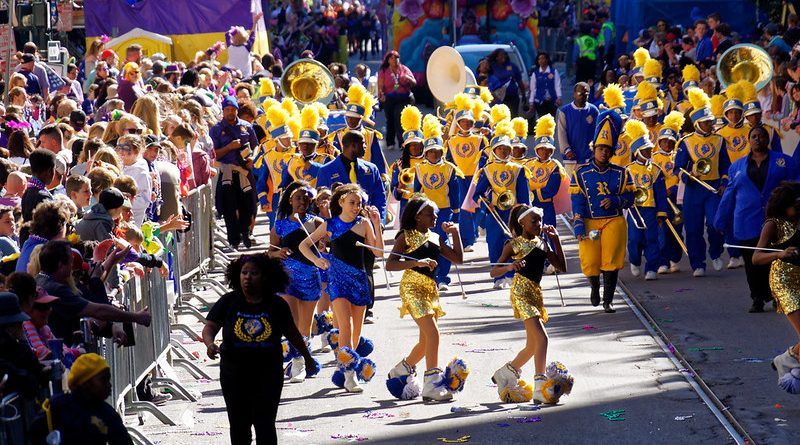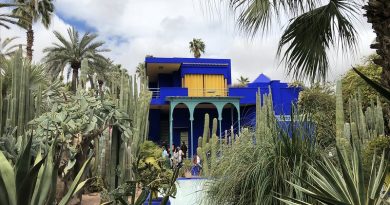The Mardi Gras of New Orleans
Lundi Gras and Mardi Gras – Fat Monday and Fat Tuesday – are the culmination of what was originally a Roman Catholic celebration to mark the forty-seven days before Easter. There are eleven days of parades leading up to Mardi Gras day. During this time there are parades every night, and during the day sometimes over the weekend, ending up with twenty to thirty parades altogether.
The whole crazy tradition of these parades started in the mid-1800s, when they were organised by the wealthy elite who formed secret societies called ‘crews’. Today there are over fifty crews, most of them named after Greek and Roman Gods like Saturn, Bacchus, Orpheus and Endemion. Each of these crews has its own float to move through the humming streets of New Orleans, and these floats are painstakingly decorated to become spectacles worthy of the event.
There are numerous traditions surrounding the decorum of the float-riders. It is forbidden to take your mask off while riding the float, and this tradition, along with the throwing of beads, dates back to the 1800s. Bead-throwing involves the people riding the floats chucking strings of big, sparkly, coloured beads into the crowd, who then string them around their necks. Spectators tend to compete to see who can end up wearing the most strings of beads by the end of a night of floaty revelry.
Carnival and Sub-Cultures
Up until the ‘Orpheus’ crew was founded in 1994, crews were segregated by race and gender. Orpheus lets anyone ride, as long as you can afford the cool boarding fee of six hundred and seventy-five dollars. Nevertheless, New Orleans is a divided city, both racially and economically, and every section of the community celebrates in their own way.
In the Treme neighbourhood, for instance, which lies just North of the French Quarter, the references aren’t to Greek Gods but to Native American and African cultures. Black New Orleaneans have been parading as Indians for over a hundred years. It is a celebration of the protection given to fugitive slaves by the Native American tribes that lived in the swamps. The ‘Indian’ gangs patrol the streets, looking for other gangs to challenge in song and dance.
The big procession on Mardi Gras day is Zulu, which was set up in 1916 as a parody of the all-white crews. Like every crew, Zulu has its dress rules – instead of a mask, participants wear afro wigs and face paint in a mockery of racist stereotypes.
When
New Orleans is most famous for its Mardi Gras carnival. It is held in February, and that is the time that most travellers visit the area .Prices do soar in New Orleans over Mardi Gras, though, and you may find yourself priced out of the desirable French Quarter.
Festival Essentials
Where: New Orleans, Louisiana, South USA
When: February
What’s it about: Magnificent carnival with a French and Creole twist, a celebration of the cities mingling cultures
Look Out For: Chains of beads, collect from the float crews
At the End of the Party
At the stroke of midnight the police march down Bourbon Street and the whole party comes to an end. New Orleaneans rate Mardi Gras’ success depending on how much trash has been collected; the amount usually totals at around a thousand tonnes.
More Information
Carnival New Orleans
Virtual tours on the latest festivities
Read – Carnival Season
Watch – Mardi Gras Globe Guides
Destination – Deep South USA




